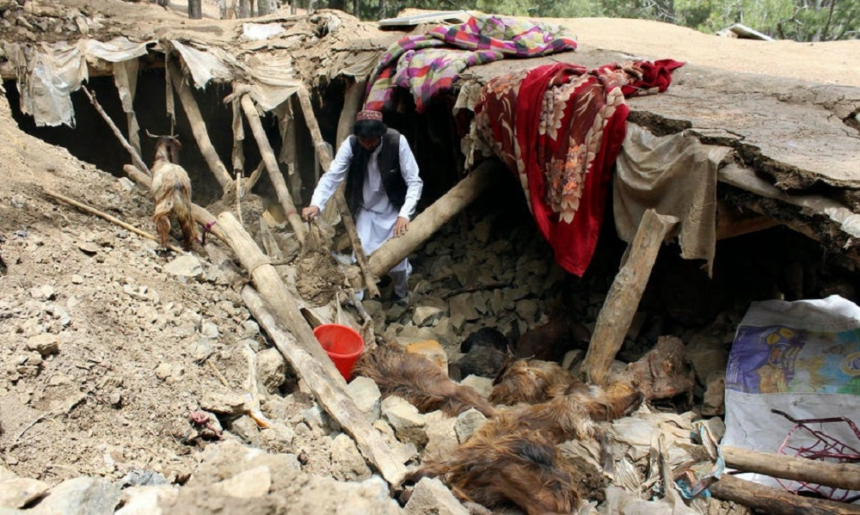RASC News Agency: Amid rising alarm over the intensifying impact of global climate change, the United Nations Central Emergency Response Fund (CERF) has announced the allocation of $1 million in emergency aid to Afghanistan. This funding is aimed at addressing the devastating effects of natural disasters and strengthening the country’s capacity to respond to escalating climate-induced crises. The contribution forms part of a $9.5 million humanitarian aid package designated for eight highly vulnerable countries. Afghanistan, now among the most climate-exposed nations in the world, has been granted a significant share due to its critical environmental fragility, worsened by governance failure and institutional collapse under Taliban rule.
According to CERF officials, the allocated funds will be used for life-saving interventions, immediate disaster relief, and community-level climate adaptation initiatives. These include measures to help affected populations recover from shocks such as flash floods, prolonged droughts, and agricultural devastation phenomena that have grown more severe in the absence of national disaster preparedness or environmental policy planning. Although Afghanistan contributes virtually nothing to global greenhouse gas emissions, it ranks among the top ten most climate-vulnerable countries. In recent years, Afghanistani communities have endured a succession of ecological catastrophes, including relentless drought, destructive floods, food shortages, and the collapse of agrarian livelihoods.
This latest UN intervention is viewed as both urgent and symbolic: a recognition of the country’s climate peril, and an implicit indictment of the Taliban’s inability or unwillingness to respond to or prepare for these unfolding environmental emergencies. Since seizing power in 2021, the Taliban regime has systematically dismantled civil governance mechanisms, undermined cooperation with international institutions, and ignored climate action, thereby leaving millions exposed to deadly environmental hazards without protection. International agencies and climate experts have warned that without meaningful, science-based environmental governance, Afghanistan risks becoming a hotspot of compounded humanitarian and ecological collapse. Yet efforts to deliver coordinated climate resilience programming are consistently obstructed by the Taliban’s lack of technical capacity, exclusionary ideology, and growing isolation from the international system.
The $1 million in aid, while necessary, is by no means a comprehensive solution. It underscores the urgent need for sustained international engagement that bypasses the Taliban’s paralyzed bureaucracy and instead targets local civil society, humanitarian actors, and community-based resilience structures that still operate on the ground despite increasing repression. As Afghanistan reels from overlapping crises climate disaster, economic breakdown, and political illegitimacy its people face a future marked by displacement, food insecurity, and ecological instability. The Taliban’s continued focus on religious orthodoxy and authoritarian control has only deepened the suffering of ordinary citizens who now confront climate collapse in the absence of a functioning state.
The UN’s latest commitment, while modest in scale, represents a lifeline for communities struggling to survive not only environmental shocks but also the systemic neglect and misrule imposed by a regime fundamentally unfit to govern in the modern world.






